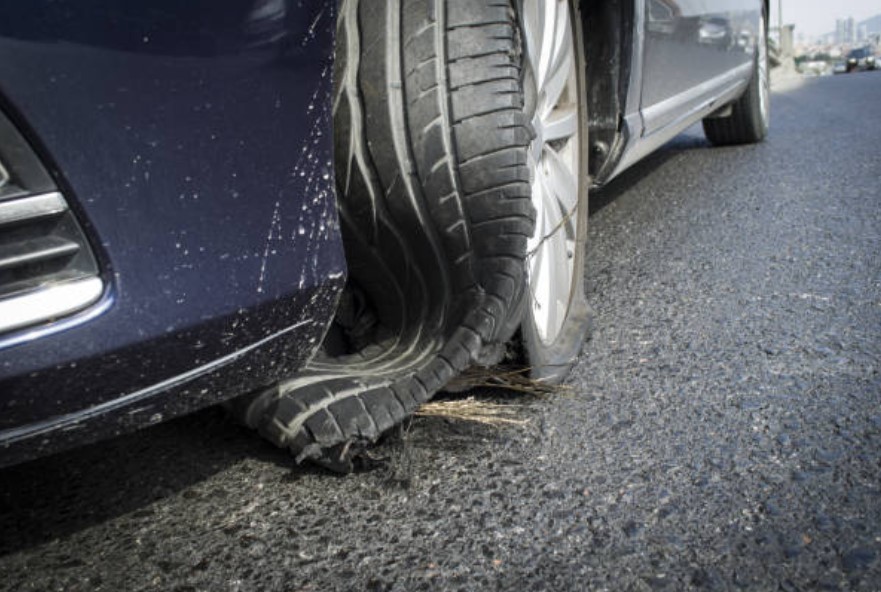Why Your WoF Inspection Might Not Pass?
We all know that a Warrant of Fitness (WoF) is an important requirement in New Zealand. Ensuring your vehicle meets essential safety standards is crucial for both safety and compliance with regulations. A WoF inspection is mandatory to ensure vehicles are safe to operate on New Zealand roads. Let’s discuss the most common reasons why vehicles fail the WoF inspection:
Tyre Condition
One of the most critical aspects of a WoF inspection is the condition of your tyres. Tyres play a vital role in maintaining grip, stability, and safety on the road. They must have adequate tread depth to effectively channel water away and maintain traction, especially in wet conditions. The legal minimum tread depth required in New Zealand is 1.5 millimetres across the tread pattern. Tyres that are worn below this depth or have visible damage such as cuts, bulges, or uneven wear patterns will fail the inspection.
Brake System
The effectiveness of your vehicle’s braking system is another key focus during a WoF inspection. Brakes are thoroughly checked for wear, functionality, and responsiveness. Any signs of excessive wear on brake pads or discs, leaking brake fluid, or insufficient braking performance can result in the vehicle not passing inspection.
Lights
Proper lighting is crucial for visibility and communication on the road. During the WoF inspection, all lights including headlights, brake lights, indicators, and hazard lights are inspected. Burnt-out bulbs, cracked lenses, or faulty wiring can result in inspection failure.
Structural Condition
The structural integrity of your vehicle is crucial during a WoF inspection, as it ensures safety and stability. Inspectors carefully examine critical areas such as the chassis and suspension components for rust or corrosion. Maintaining a structurally sound vehicle increases the likelihood of passing your WoF inspection smoothly.
The WoF Inspection is a Comprehensive Safety Check and Also Covers:
- Glazing (ensuring your windscreen is safe)
- Windscreen washers and wipers
- Doors (checking for safe operation)
- Safety belts (ensuring they are undamaged and functional)
- Airbags (if installed)
- Speedometer functionality
- Steering and suspension safety
- Exhaust system (checking for leaks and ensuring it meets noise standards)
- Fuel system integrity (no leaks allowed)
- Sunvisors and horns are also checked during a WoF inspection to ensure they are in proper working condition.
Now, What Happens if Your WoF Fails?
If your vehicle fails its Warrant of Fitness (WoF) inspection in New Zealand, you have up to 28 days to rectify the issues and have the vehicle re-inspected. It is illegal to drive a vehicle without a valid WoF label, so it’s important to promptly address any failures to comply with regulations and ensure your vehicle is safe to drive on the roads again. You are not permitted to drive a vehicle that does not pass a WOF inspection unless you are taking it for repairs or to obtain a new WoF, provided it is safe to do so.
Importance of Tyres in Passing WoF Inspections
Tyres are not only essential for road grip and safety but are also a significant factor in passing the WoF inspection. Ensuring your tyres are in good condition with adequate tread depth and no visible damage is crucial. Regularly checking your tyres and promptly replacing them when necessary, can improve your vehicle’s safety and increase your chances of passing the inspection.
Which 3 Critical Aspects Should You Check When Inspecting Your Tyres?
- Does the tyre have sufficient tread depth?
- Is there even tread wear across the tyre?
- Are there any signs of damage on the tyre?
How Frequently a WoF is Needed?
For vehicles first registered anywhere globally on or after January 1, 2000, annual WoF inspections are required every 12 months throughout their lifespan. New vehicles undergo an initial inspection, followed by another WoF check three years after their first registration.
Tips to Keep in Mind for Passing Your WoF Inspection
- Regular Maintenance: Keep up with routine maintenance, especially tyre checks, brake inspections, and light assessments.
- Pre-inspection Check: Conduct a thorough inspection of your vehicle before the WoF appointment to identify and address any potential issues.
- Professional Repairs: Address any identified issues promptly and consider professional repairs to ensure compliance with safety standards.
Maintaining your tyres and addressing any related concerns enhances your vehicle’s safety and improves its chances of passing the WoF inspection. Displaying a valid WoF label not only confirms your vehicle’s roadworthiness but also ensures compliance with New Zealand’s road regulations. For further information, please visit the VTNZ or NZTA websites.
Stay safe out there and make sure your tyres are WoF-ready!
Happy Motoring!

Don’t Stop Here
More To Explore
Tyre Types 101: Find Your Perfect Match!
When it comes to your vehicle’s performance and safety, choosing the right tyres is key.…
Finding the Best SUV Tyres for Your Ride
If you’re in the market for new tyres for your SUV, you’re not alone. Whether…
Tyre Blowout? Stay in Control!
A tyre blowout can happen to anyone, but knowing how to handle it makes all…



